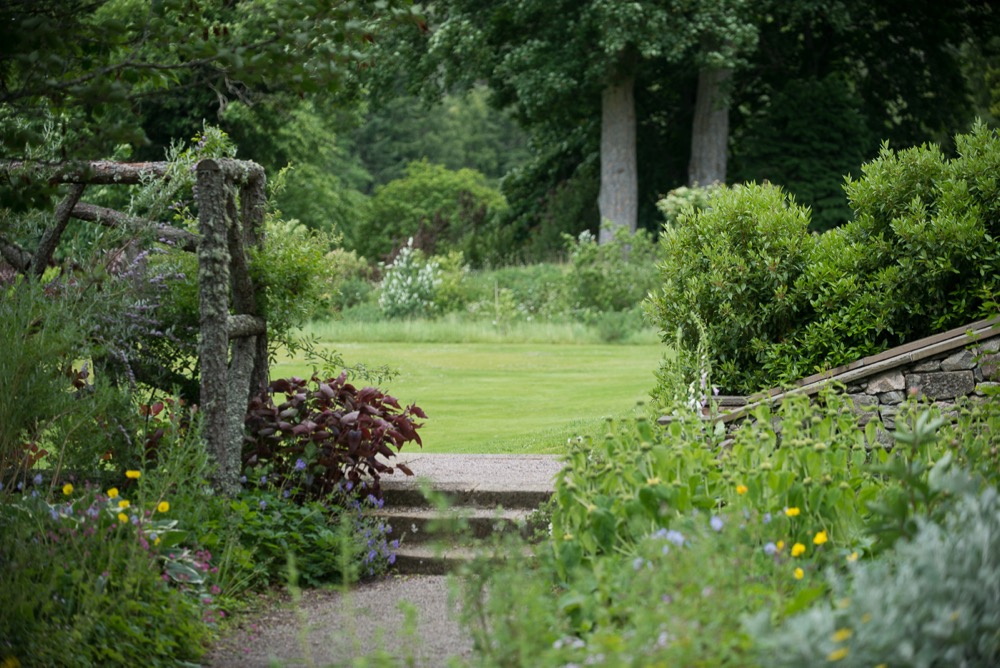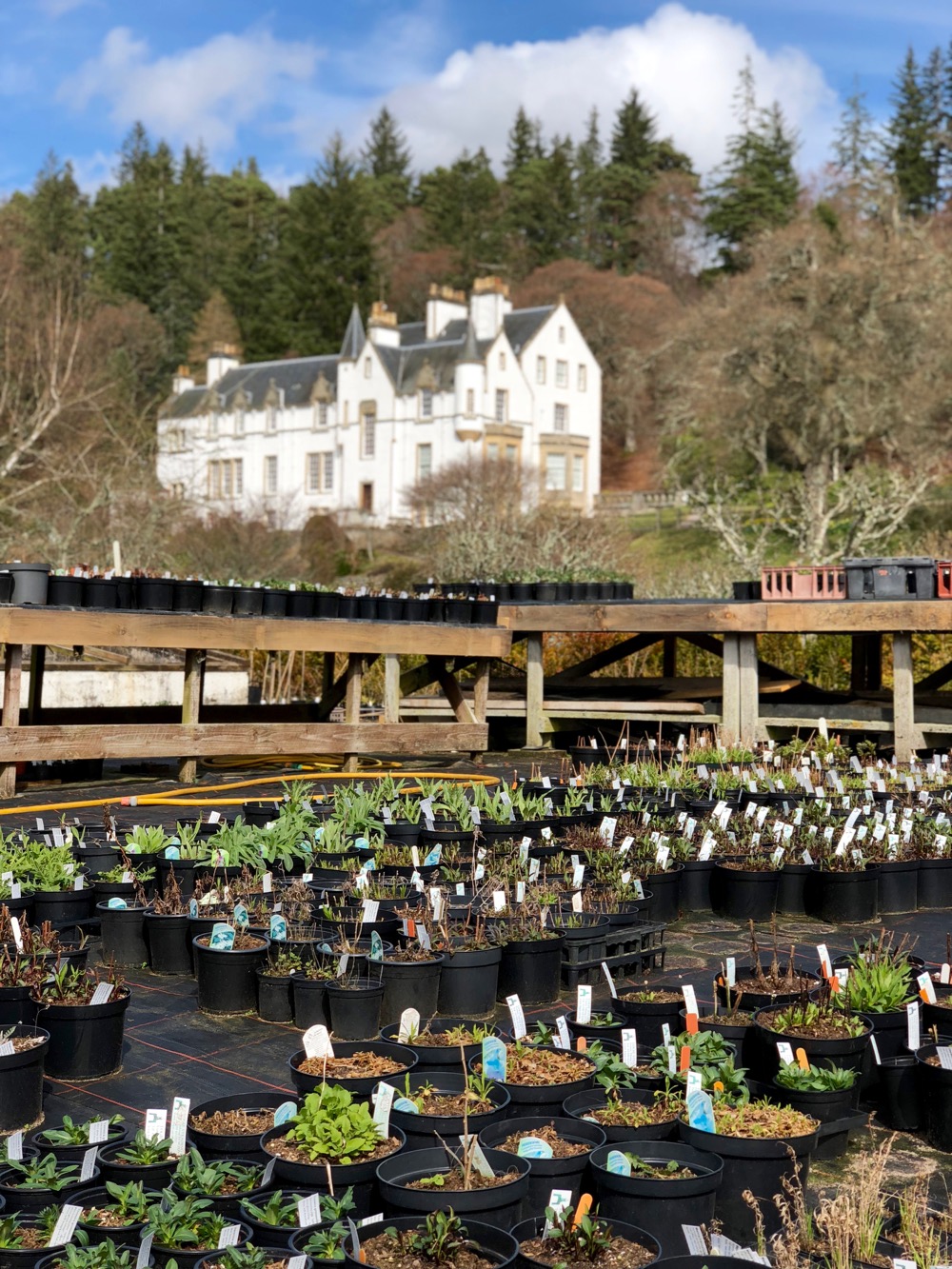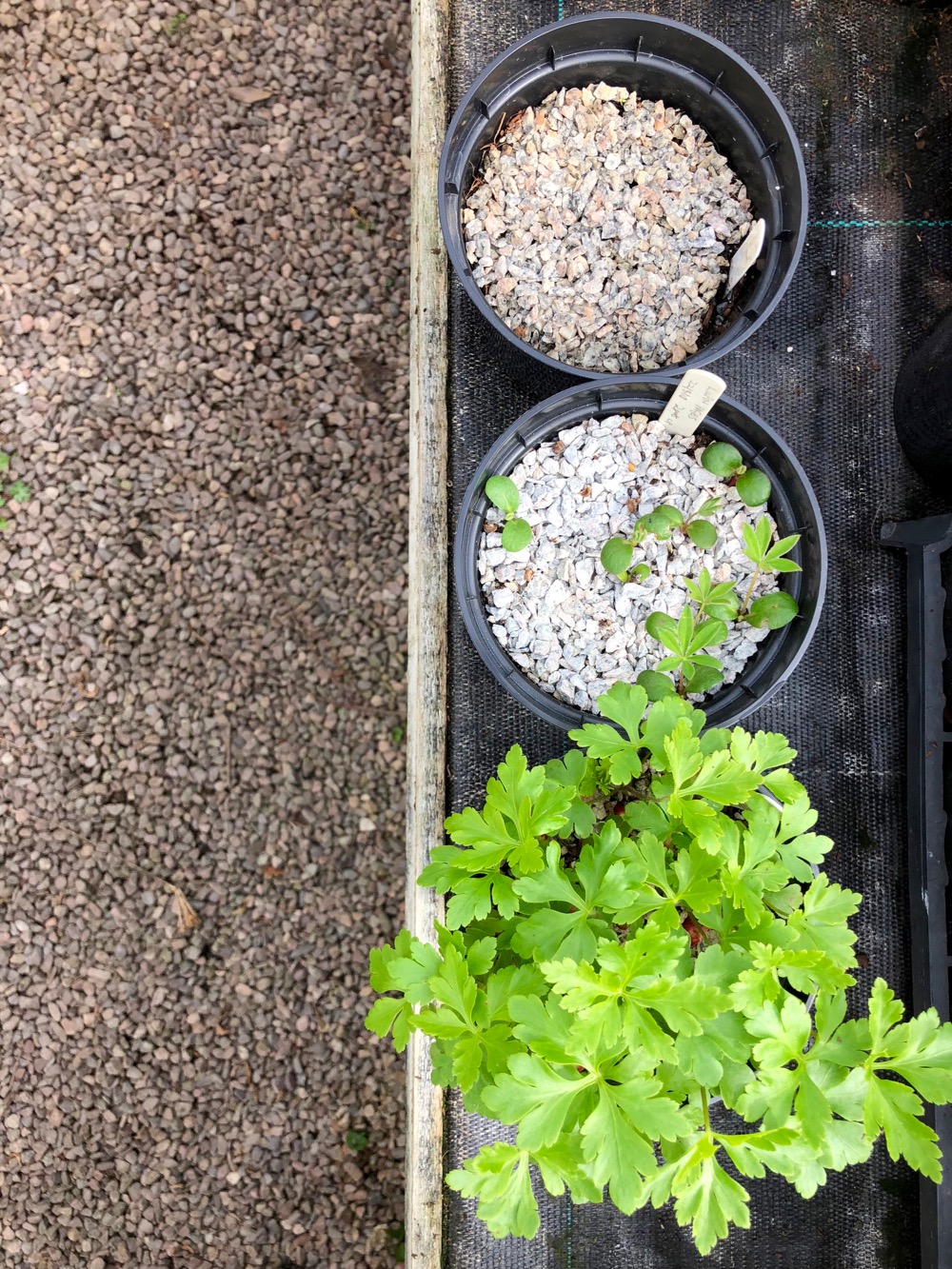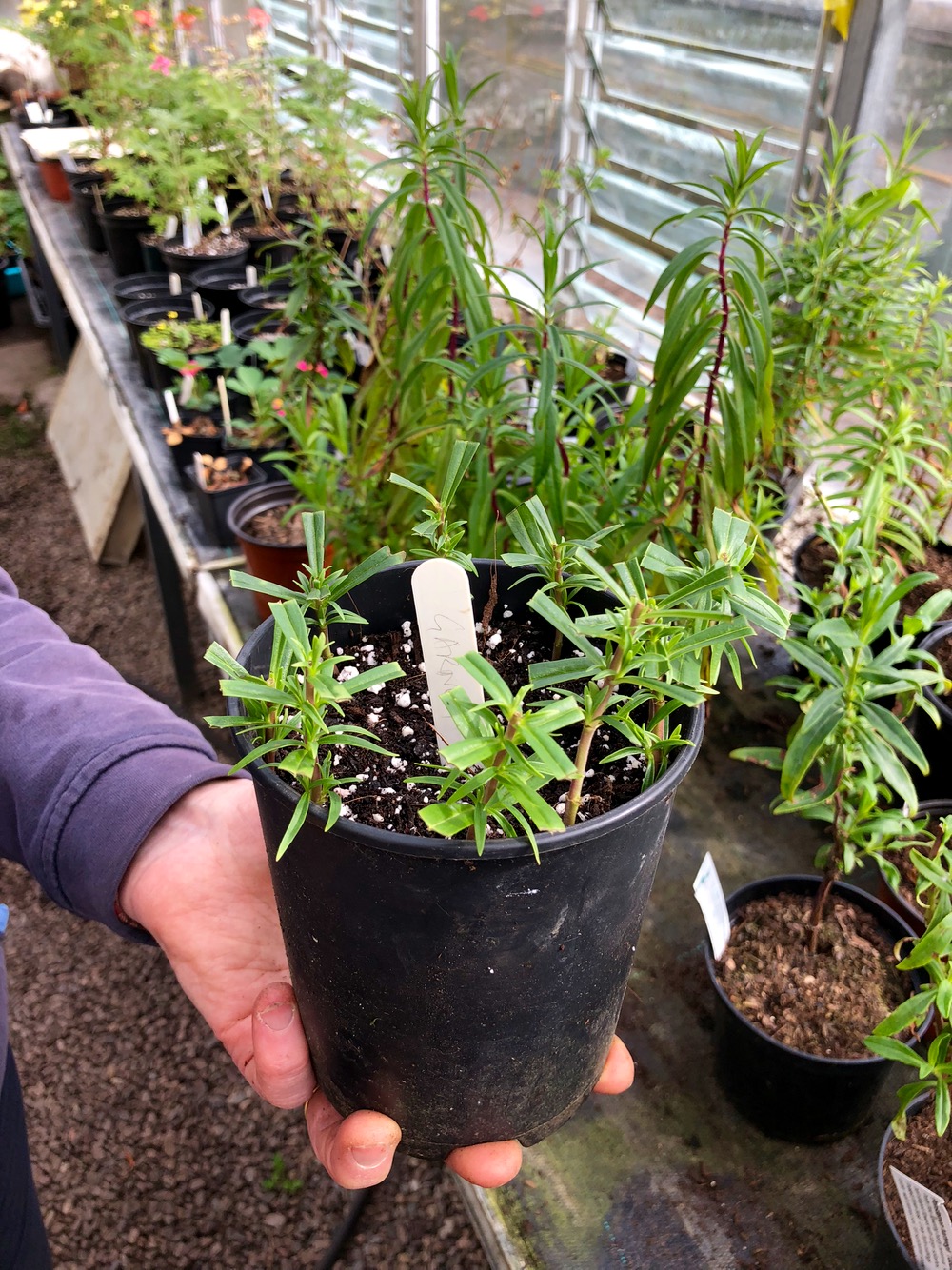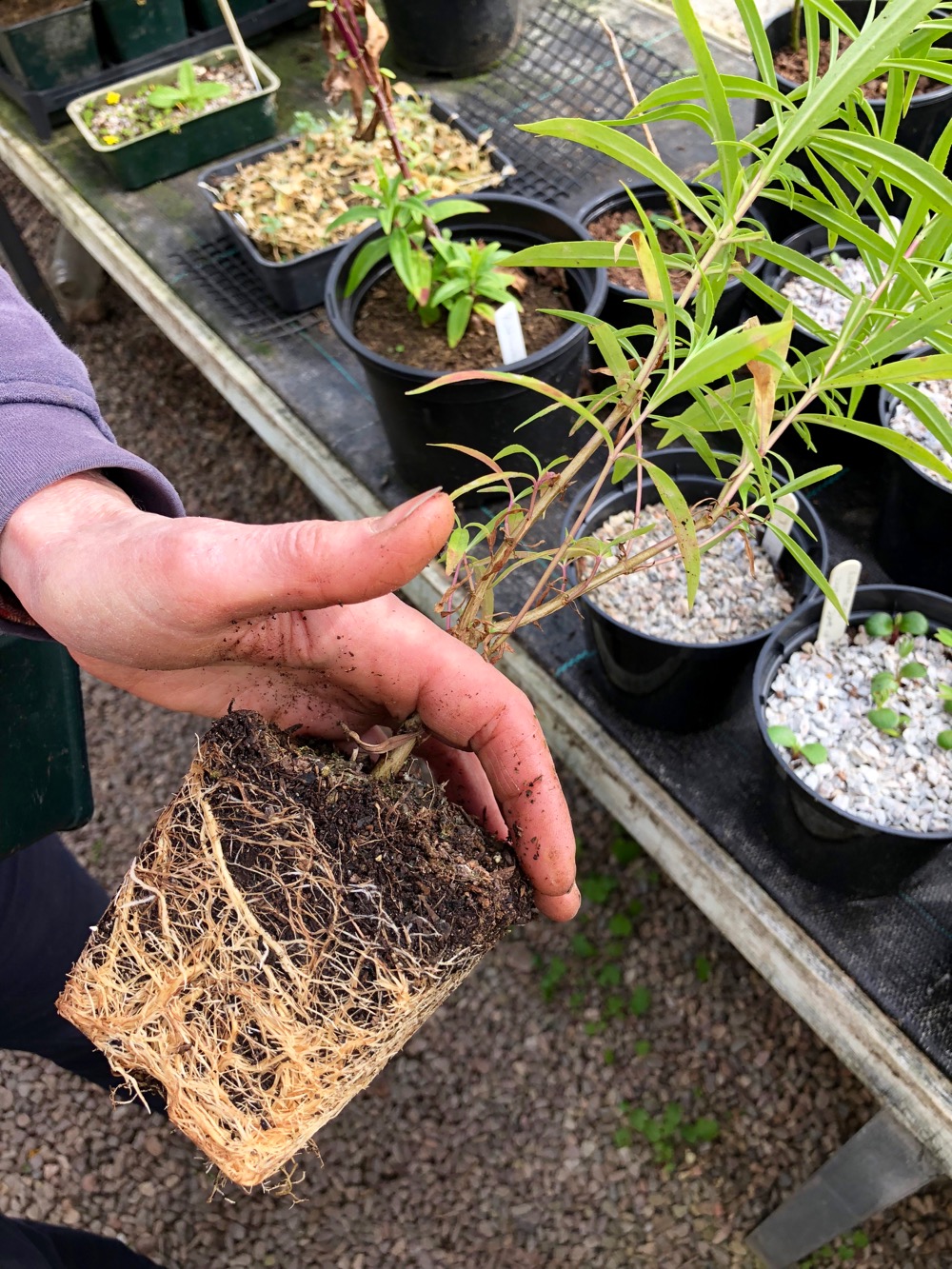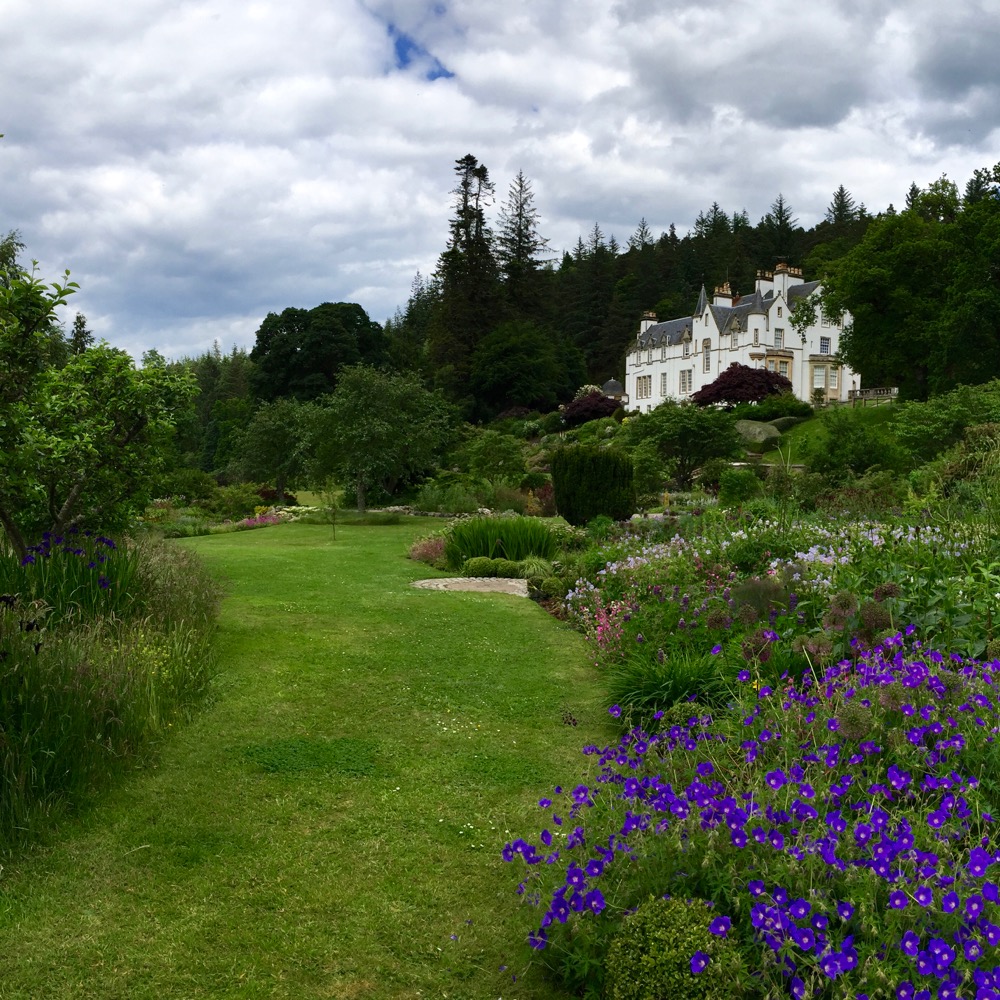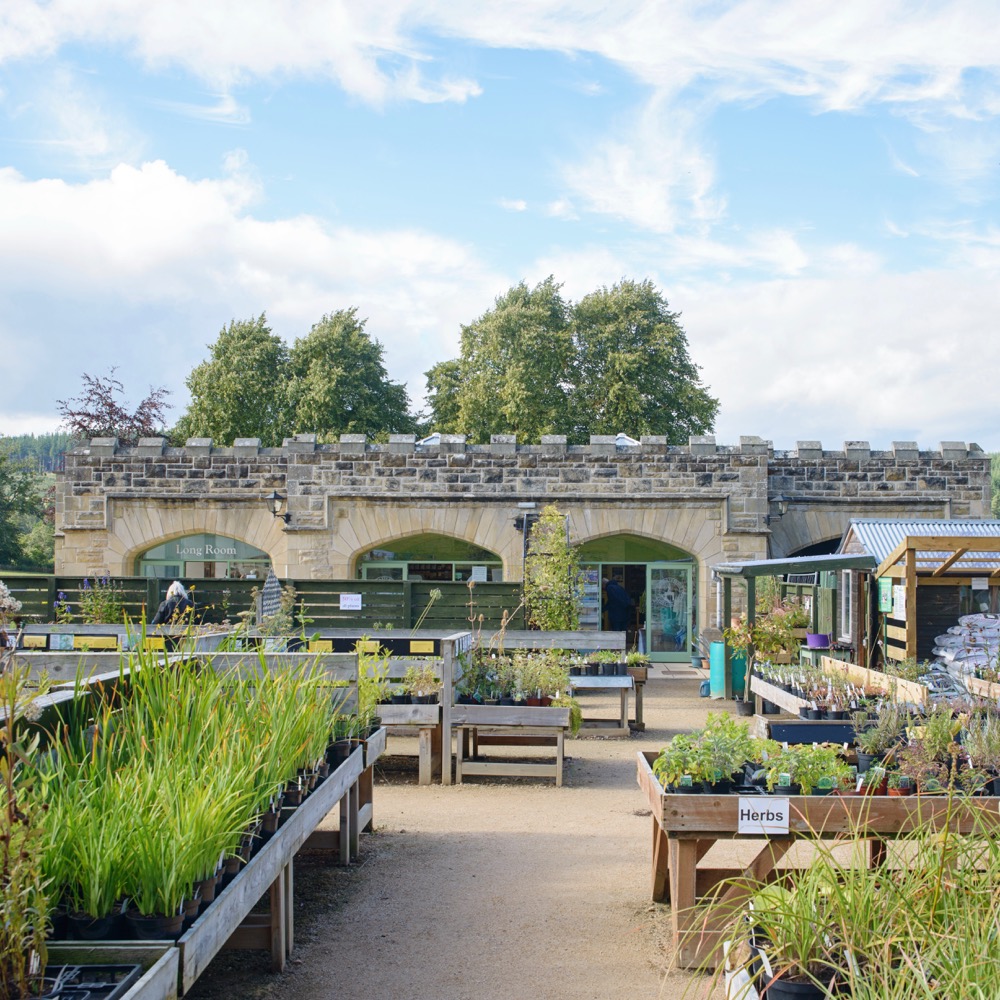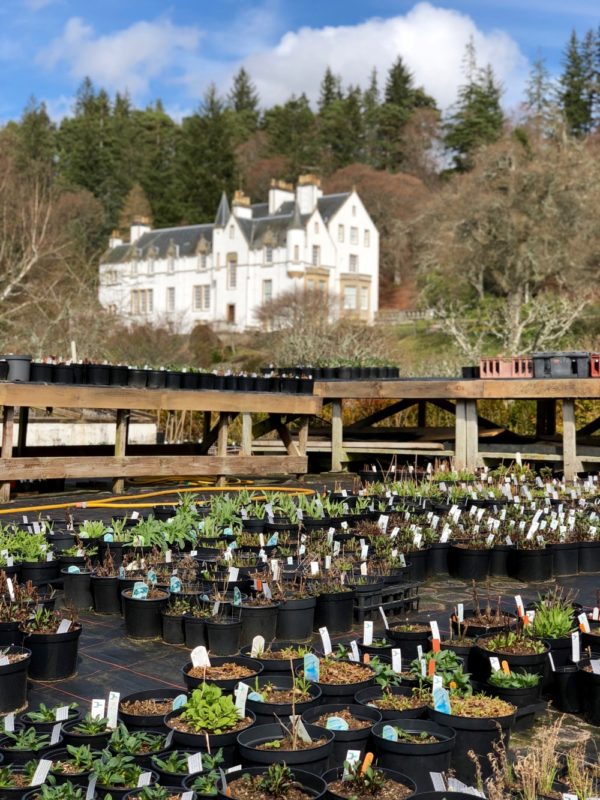I must immediately confess that I am not a gardener. I have nothing but admiration for people who can grow things, and – beyond that – know how to make what they’ve grown into a beautiful garden. I don’t know a seedling from a sedum and I certainly don’t know how to keep anything alive by anything other than pure chance – more water? too much water? cut it back? oops have I killed it off? And so it goes on. So when I say that this was my first day at nursery, it was my first time in the plant nursery at Logie to do anything other than hunt for Panny when she’s left her phone behind and it was really like being at nursery school for the very first time.
I’ve long admired Panny’s garden at Logie, especially since the transformation of 2009-2012 into something altogether more wild and ‘natural’ (you can read all about the garden’s makeover here), and I’ve spent some time wandering it, photographing it and scuttling past the nursery with a glance of incomprehension over the wall across the neat rows of pots, tubs and polytunnels. So it was about time that I ventured to the other side of that wall and found out something of what goes on in the nursery. After all, a majority of the plants you can buy in the Farm & Garden Shop have started life here, and I hadn’t a clue how it happens. So here’s the result of my first lesson. I must confess that I did send my ‘homework’ to the gardener (a.k.a. Panny) to be checked before I pressed ‘Publish’, as I am not a very confident garden student. Hopefully, by increments, that is about to start to change.
Lesson 1: From Babies to Adults & How Plants Get There
The plants you see blooming brazenly in the garden all summer-long have generally started life here in the nursery. If you are heading down to the farm and garden shop any day now to purchase something to plant in your garden to achieve a big full-grown look this summer, this is where it will be, all potted up and ready to head over to the shop and into someone’s garden at home.
Even I know that plants don’t magically appear in pots, ready to be planted out, but I had no idea how they get to this stage – and that’s where my lesson began.
Propagation in the Logie Nursery
First of all, I had to look up ‘propagation’ as my definition was pretty fuzzy. Yes, that’s the level I’m starting at. Google dictionary tells me it’s ‘the breeding of specimens of a plant or animal by natural processes from the parent stock’. So far, so straightforward. Lets hope things continue in this fashion.
At Logie the propagation team (led by Bridget and Anna) increase the numbers of plants using:
- Seeds
- Divisions
- Cuttings
1. Seeds
Seeds are sown in 1 litre pots which are then put into the cold frames or in the greenhouse depending on which environment is best for that particular seed’s germination. Warmth is not always best and, in fact, can inhibit germination – nature is very clever. Once the seedlings have at least two true leaves they go into a bigger pot and either to the shop or, if they’re not ready, spend another year – or even two – here in the nursery in a larger pot again before going into the ground. Panny explained that it’s better for the plant to go into the ground a bit more grown up with a chunk of soil attached as a solid lump/block, not falling apart, to give it a greater chance to thrive. If it goes out into the ground before it’s big and strong enough it would be a bit like ‘putting a baby onto steak when it should still be on milk’.
2. Divisions
By far the most-used method of starting plants here at Logie is dividing. A mature plant is divided up into smaller parts and potted into individual pots. These then spend some time in the poly tunnel to mature before they’re ready for the next stage of life either in a larger pot or into the ground (either here at Logie or via the Farm & Garden Shop into somebody’s garden).
In fact, all the Delphinium taliensis plants (the ones in the black pots) in the picture below were divided by Bridget from just one original plant! Bridget is particularly pleased with these as the plant flowers so late that somehow they had never quite managed to collect seed from it in the garden. I’m told that these will turn out to be a very pretty bright blue colour.
3. Cuttings
What I hadn’t appreciated is that when you take a cutting, the plant that grows will ‘breed true’. As Panny said, ‘just think of Dolly the sheep’ (now displayed at the National Museum of Scotland, and forever synonymous with cloning for those of us of a certain generation, but, as usual, I digress). With a cutting (and divisions) you will have a replica of the parent plant, in a similar way that you would with cloning.
Once a cutting has been taken, the leaves are stripped off to reduce transpiration, the top is pinched off to reduce apical dominance. It then goes into a pot in a sheltered place to grow on to the next stage and continue it’s life much in the same way as a divided plant or a seedling.
Once the plant has a solid root system (like in the picture below) and before moving on out, the bottom quarter inch/half cm is cut off where it is very matted together. Panny told me that research has led to the current thinking not to tease the roots out – as was done in the past – as for most plants it is considered better to cut them off and make a clean break so they wont get folded/damaged when repotted or planted into the ground. She explained this process as a bit like pruning: you can prune the roots just as you can prune the plant itself.
From Propagation in the Logie Nursery to Your Garden
So there you have it, the three ways propagation happens, and an explanation of how the plants that start off life here in the Logie nursery grow on to be mature enough to plant into your garden. Next time you’re here for a wander in the garden, stick your head over the gate and have a look at where many of the plants you see started their lives. When I’m looking for garden inspiration I tend to have a wander in Logie House Garden and decide on a sort of look or feel from an area in the garden that appeals to me – and then ask for help to achieve it! And while the garden doesn’t yet look as exuberant as in this summer picture below, what you plant now can achieve this feel in a just a few months time.
The ladies in the Farm & Garden Shop are knowledgeable (some of them work in both the shop, the garden and the nursery and may well have nurtured the plants you see for sale) and very good at helping you to find plants to suit or even to replicate a look and feel you’ve liked in the garden here. If in doubt, it’s well worth asking.

